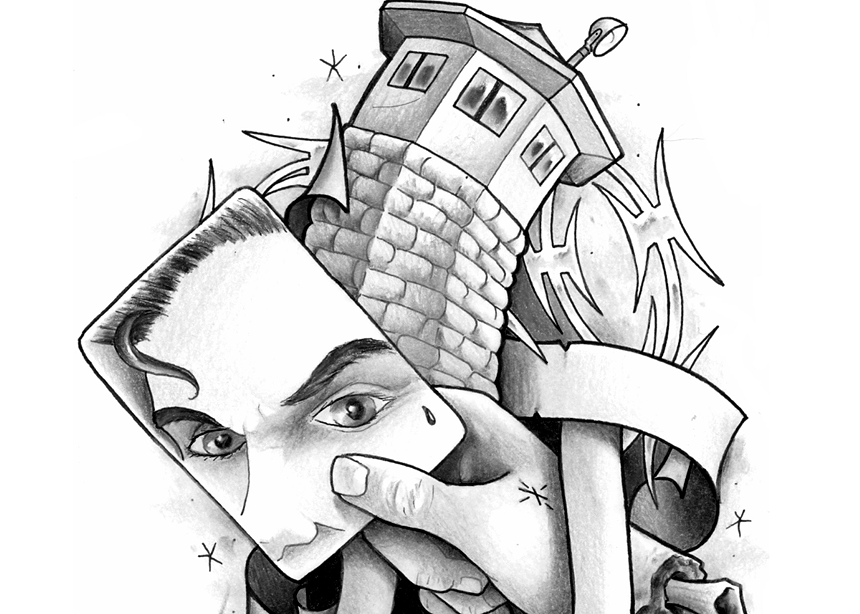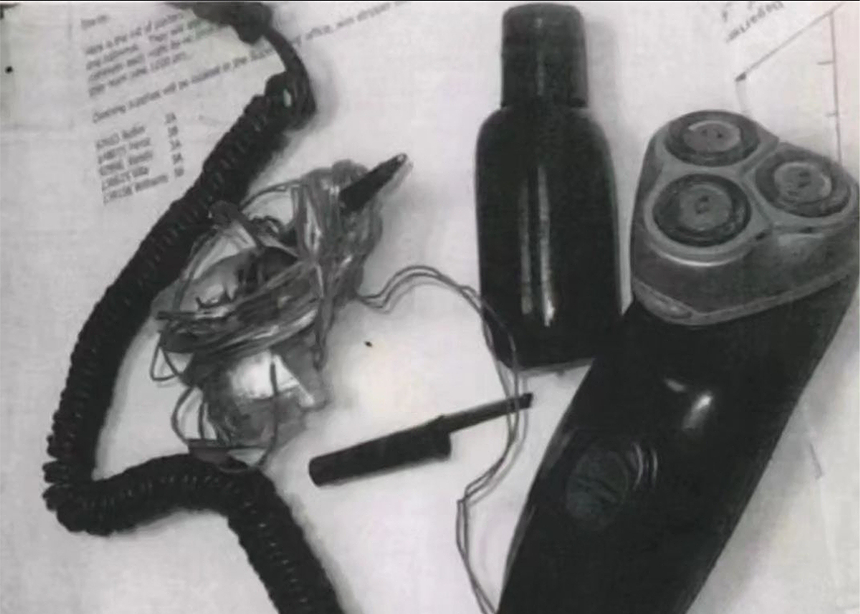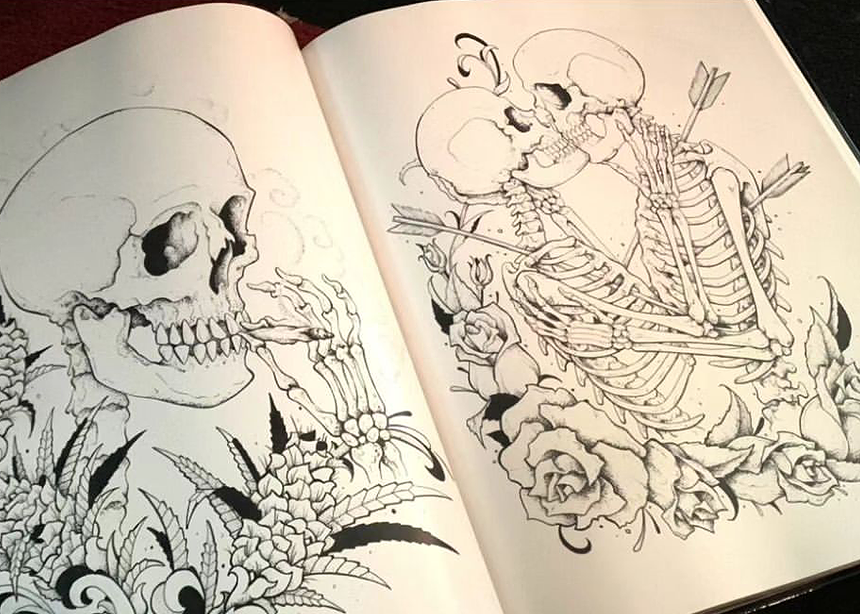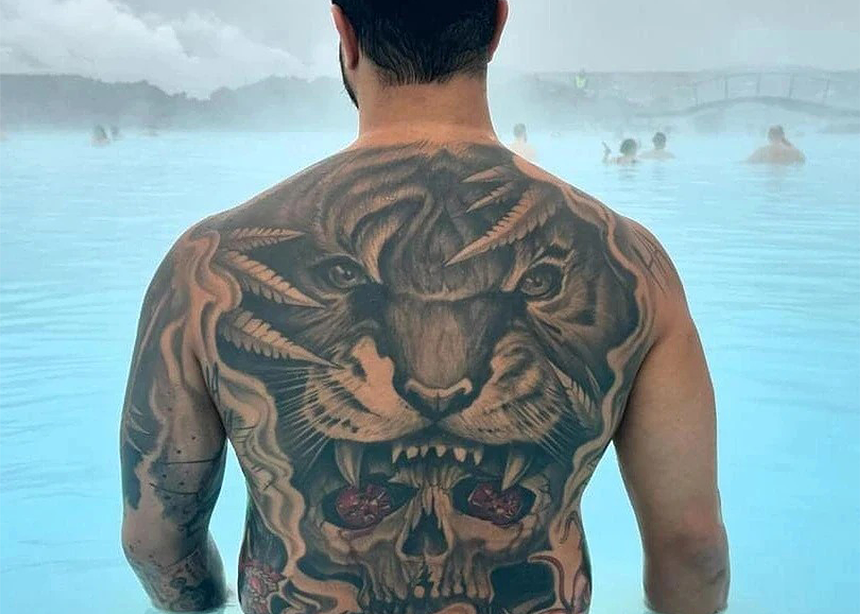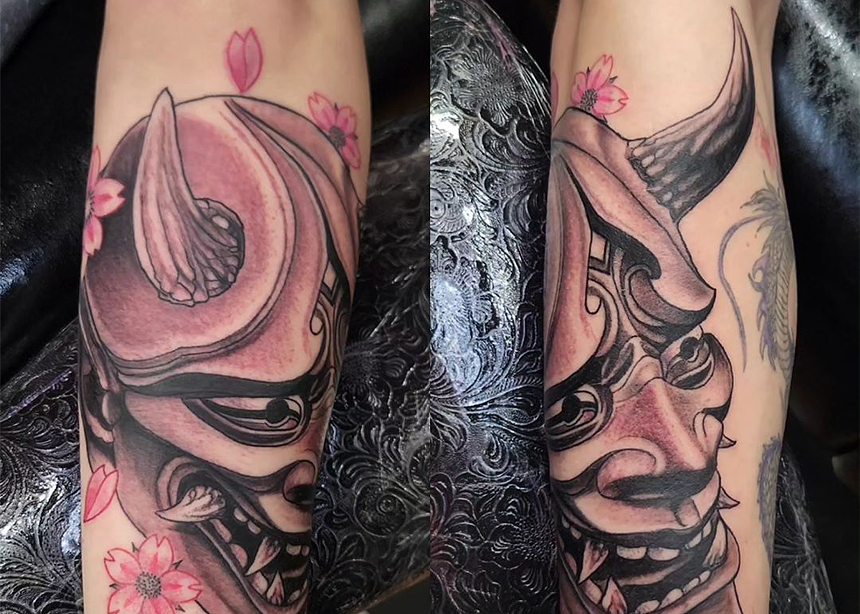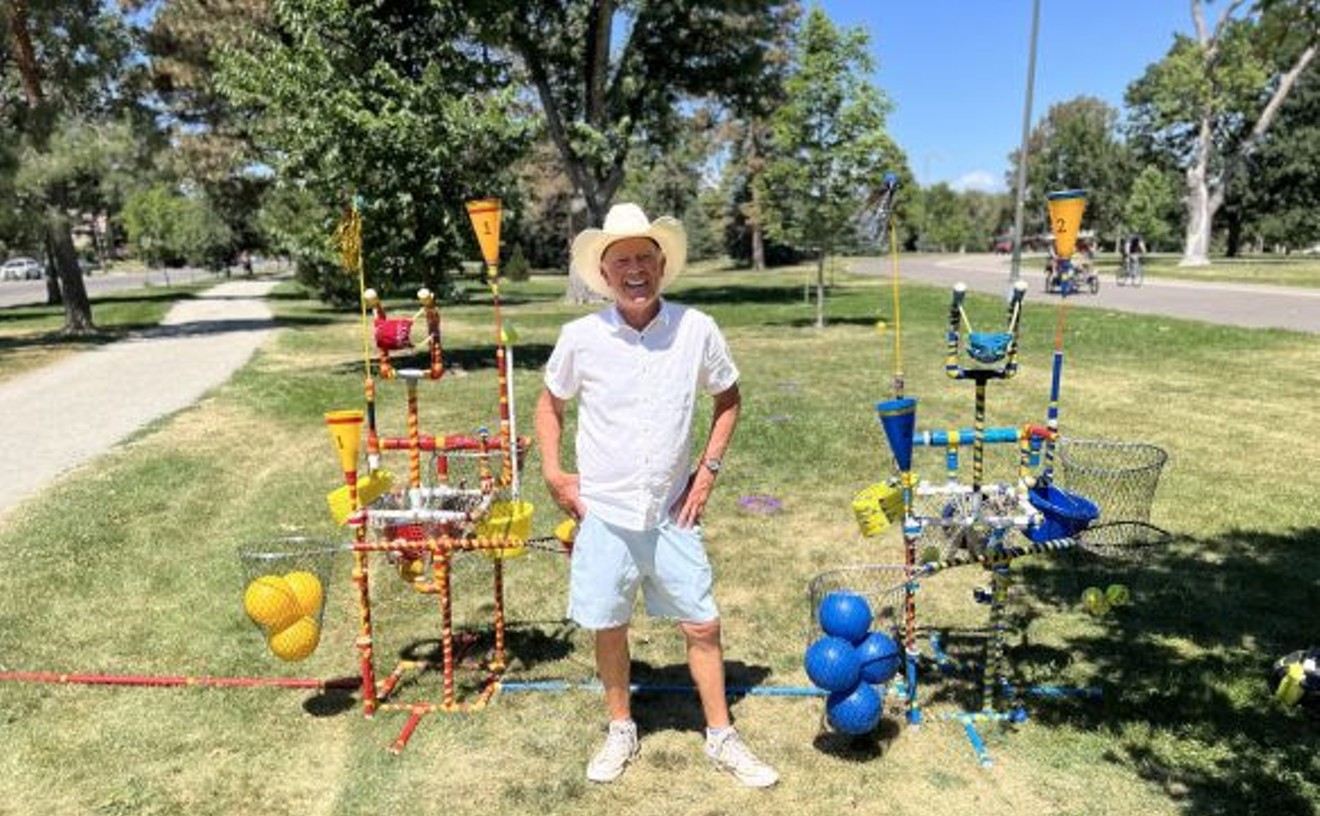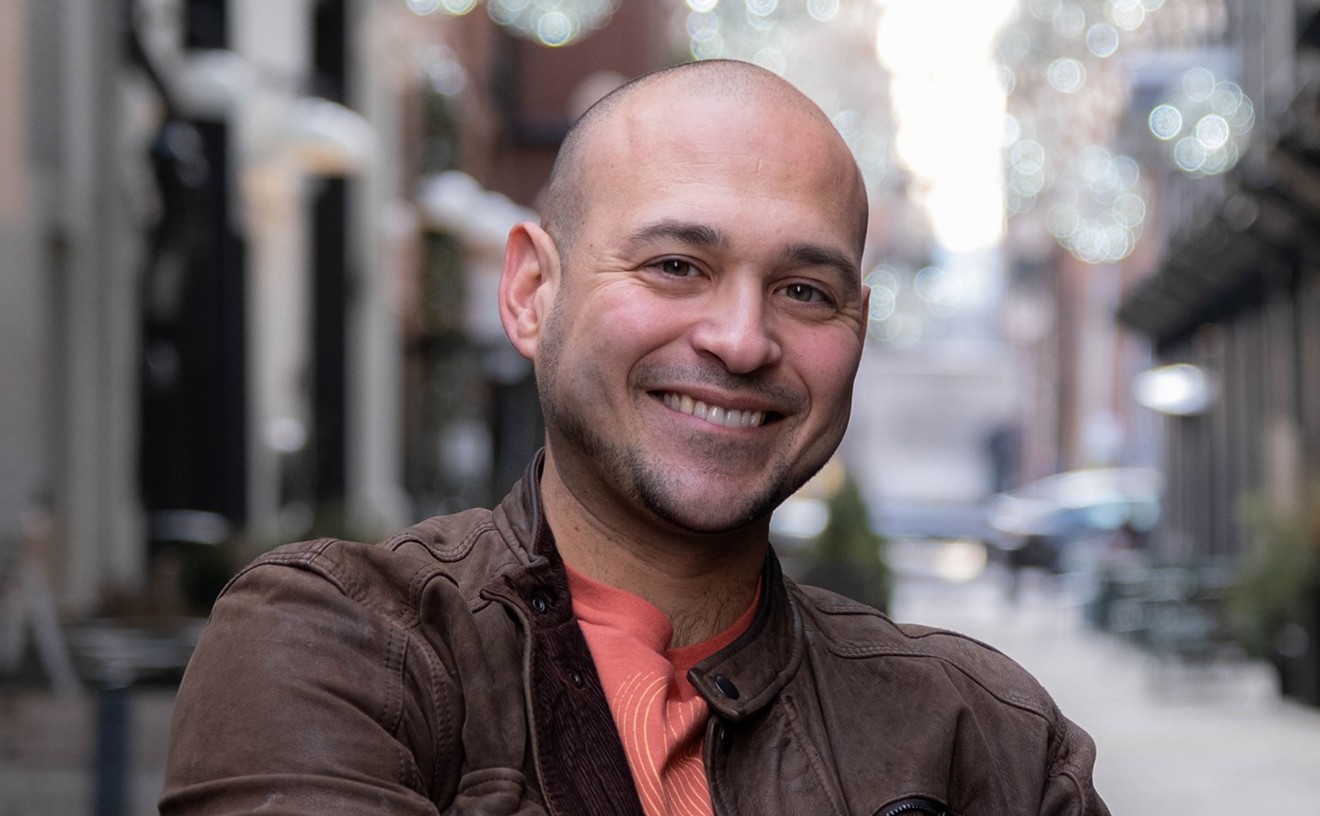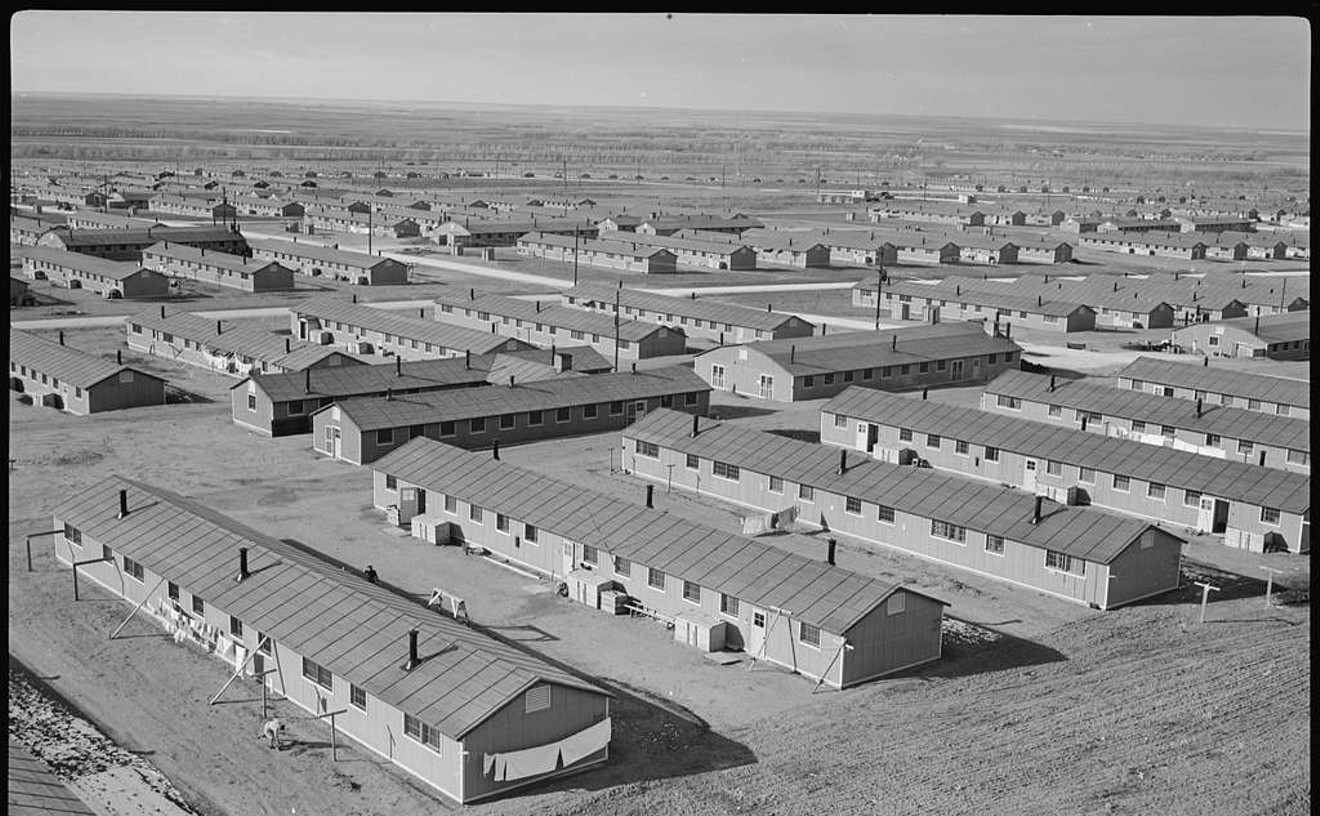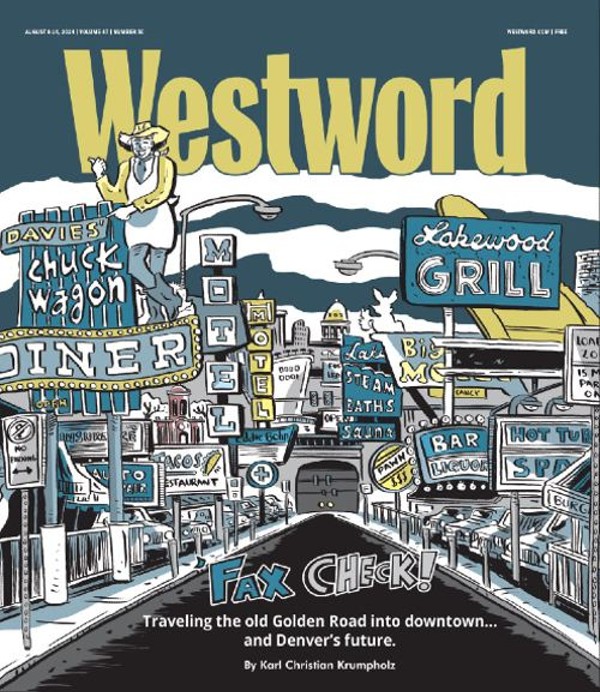"I was always drawing all the time, but I didn't have any direction, really, to go with it," recalls Piper, a local tattoo artist and author. "I got enrolled into the Colorado Institute of Art at one point in time, but I never made it to one class. I ended up getting locked up, and that's when I discovered tattooing."
That was in 1999, and Piper spent the next twelve years serving a burglary sentence inside the Colorado Department of Corrections. At the same time, he became an in-demand penitentiary tattooer. He was nineteen, an age when most young creatives are typically debating whether or not art school is worth the tuition. But Piper received a completely different kind of artistic training — one that came with demanding and sometimes dangerous clients, nerve-racking challenges and severe risks.
"I first started just kind of messing around with a couple of the buddies, because I was always drawing and stuff, and they talked me into tattooing," he recalls. "I was hesitant at first, just because I knew the weight that came along with it. ... I was able to see that you end up getting put right up into the mix."
Now, twelve years after his release, he's taking a detailed look at those intense years with his first book, American InkSlinger: The Confessions and Illustrations of a Penitentiary Tattoo Artist. Part memoir and part art book, it's built around a portfolio of more than 400 paintings, drawings, sketches and flash designs that Piper managed to rescue from his time inside, when his work could be confiscated at any time — and often was.
"That's only the art that got out," he notes. "Once you start tattooing in there, you get a red flag and they know you tattoo, so they shake you down more. They took my art all the time, because they considered it tattoo paraphernalia — because in there, it's illegal. When I could, I'd mail stuff out to my parents, every time I got the chance, but I lost a lot of art in there that was just taken in shakedowns."
In the years after he was released, the collection remained in storage while he rebuilt his life and his artistic aspirations. For Piper, many of the designs and their connotations provoked ambiguous feelings, references to a life that he didn't live anymore. He wasn't sure that he felt comfortable being represented by them.
"The book, with the illustrations and the art, kind of portrays that," he admits. "It just shows the perspective of the outlaw, and the drug addiction and all sorts of stuff like that. That's why I don't really push it out here — a lot of it is something that I really wouldn't want to tattoo now — but it is what it is, and it's part of the journey."
That's why, mixed feelings aside, it was a subject he finally felt compelled to unearth and come to terms with, writing as "Inmate 101774."
"I've been sitting on it forever...since I got out and got [the art back] from my parents, and I just haven't known what to do with it," he explains. "And every time I break out all this art, it just always bring out questions. I always felt like some of it needed an explanation."
The book's written portions delve into the prison tattoo game, an intricate world that few people on the outside ever get to know, even if they have a lot of body art. Artists on the inside are highly sought after as well as highly at risk for punitive consequences, not to mention they also have to learn machine mechanics and draftsmanship in a virtual vacuum. In Piper's case, he lucked out early on with a cellmate who happened to be a fellow artist.
"I end up getting moved into a cell with this guy [who] was an old biker tattoo artist," Piper recalls. "That's when I really started picking up the do's and don'ts, and picking up how to do everything the right way, and really just soaking things up."
The first challenge, he explains, is creating a machine to tattoo with. A small electric motor has to be sourced to drive it, which is sometimes stripped from something like a CD-ROM tower for a desktop computer. Even better, Piper says, are those inside an electric razor, which can be taken apart, used for the machine and then put back together for concealment. Other parts might come from pen tubes or toothbrushes.
"That was one of the big things, too, is to be able to build a reliable machine that actually worked and did a really good job," he says. "I've seen a lot of them that were really put together terribly, that didn't work as well, didn't run efficiently, didn't pull straight lines."
Machine construction was far from the only hurdle. Raids and searches by the guards, especially for known tattooers, were a constant threat — one that could send an inmate to solitary confinement for several weeks as well as take up to fifty days of good behavior from their sentence.
An artist's efforts to prevent that might entail an entire crew. "I'd actually have a team, or a car, of people that would help me," Piper says. "They'd hold on to my tattoo machines [and] my ink; they'd help me keep eyes. Because while we tattooed, we actually had to watch out for the guards that would walk, or they'd just come in several deep to shake you down."
The whole arrangement came with a complex system of payment and favors. In a month's time, Piper might complete "two paid [tattoos], where I'd have someone order me canteen, so that'd generally be between $30 to $80 a tattoo. Which, I mean, is not much out here, but in there, that actually goes a long way. And then I'd have to tattoo my car...I'd tattoo them for trade, you know, if you help me keep eyes and get away."
Sometimes they would take even dicier steps to pull off a job. "If I'd have someone that I'd have to tattoo, I'd actually have them switch with my [cellmate]," Piper says. "So my celly would go stay in their cell, and they would stay in my cell overnight — which is risky, because they can actually write you up for attempted escape for doing that. But at night you get a little bit more lenience. You still have to kind of keep an eye, ears out, [but] they don't walk as much."
With so much risk and work entailed, those on the outside might wonder why an imprisoned artist with so much at stake would continue to do it at all.
"It was just a way to express yourself the most you can in there," Piper says. "Doing tattoos, especially getting tattoos...you know, it was illegal, and you got in a lot of trouble for it...but it was one way to kind of take control of yourself, you know what I mean?"
Tattoos were one thing the system couldn't touch: Once you had them, they couldn't take them away.
Now those days are long behind him. Piper's been working in metro Denver as a legitimate tattoo artist since his release, which he describes as "almost like starting over, to be honest. You know, the skin didn't change, but the tool did." Still, he can't forget that his awakening as an artist happened during those tough, stressful years.
"One of the challenging things about it is, you had to create the art yourself," he says. With few books or magazines allowed, "there wasn't a lot of influence — you just had to use your own creativity and draw. I look back at that and see that as definitely a plus."
Now, like many formerly incarcerated individuals, Piper is all about giving back to the next generation: He's the vice president of a new nonprofit, started by a former cellmate, called the Pinnacle Youth Summit. The group is based around outdoor activities such as hiking, riding ATVs, skiing and snowboarding, but also around art and building community free from drug and alcohol abuse. Piper was inspired to achieve his own sobriety when he started his family. Following his incarceration, he met his wife and now has two sons, ages three and seven. "I felt like I had to become a better me so that I can be a better father," he says.
And, of course, he still tattoos, working out of a private studio and compiling a new portfolio, one that rivals that of American InkSlinger in size. His current work is full of realistic portraits, massive freehand designs and ample influence from his lifelong love of horror films. Day-to-day tattooing remains an inspiration and, he says, his deliverance.
"I feel like it's generally saved my life," he says. "It gave me something else, you know? It gave me something to look forward to. It gave me something to work on. It gave me something to build goals onto."
With a touch of irony, he concludes: "Even though it was illegal and it was keeping me in there longer and all that...in the long run, it's what's keeping me out."
American InkSlinger is available for purchase at BookBaby. Piper can be contacted for tattoo booking requests @the_paid_piper on Instagram and at [email protected].

Audio By Carbonatix
[
{
"name": "Air - MediumRectangle - Inline Content - Mobile Display Size",
"component": "12017618",
"insertPoint": "2",
"requiredCountToDisplay": "2",
"watchElement": ".fdn-content-body",
"astAdList": [
{
"adType": "rectangle",
"displayTargets": "mobile"
}
]
},{
"name": "Editor Picks",
"component": "17242653",
"insertPoint": "4",
"requiredCountToDisplay": "1",
"watchElement": ".fdn-content-body",
"astAdList": [
{
"adType": "rectangle",
"displayTargets": "desktop|tablet"
},{
"adType": "rectangle",
"displayTargets": "desktop|tablet|mobile"
}
]
},{
"name": "Inline Links",
"component": "18838239",
"insertPoint": "8th",
"startingPoint": 8,
"requiredCountToDisplay": "7",
"maxInsertions": 25
},{
"name": "Air - MediumRectangle - Combo - Inline Content",
"component": "17261320",
"insertPoint": "8th",
"startingPoint": 8,
"requiredCountToDisplay": "7",
"maxInsertions": 25,
"watchElement": ".fdn-content-body",
"astAdList": [
{
"adType": "rectangle",
"displayTargets": "desktop|tablet"
},{
"adType": "rectangle",
"displayTargets": "desktop|tablet|mobile"
}
]
},{
"name": "Inline Links",
"component": "18838239",
"insertPoint": "8th",
"startingPoint": 12,
"requiredCountToDisplay": "11",
"maxInsertions": 25
},{
"name": "Air - Leaderboard Tower - Combo - Inline Content",
"component": "17261321",
"insertPoint": "8th",
"startingPoint": 12,
"requiredCountToDisplay": "11",
"maxInsertions": 25,
"watchElement": ".fdn-content-body",
"astAdList": [
{
"adType": "leaderboardInlineContent",
"displayTargets": "desktop|tablet"
},{
"adType": "tower",
"displayTargets": "mobile"
}
]
}
]



